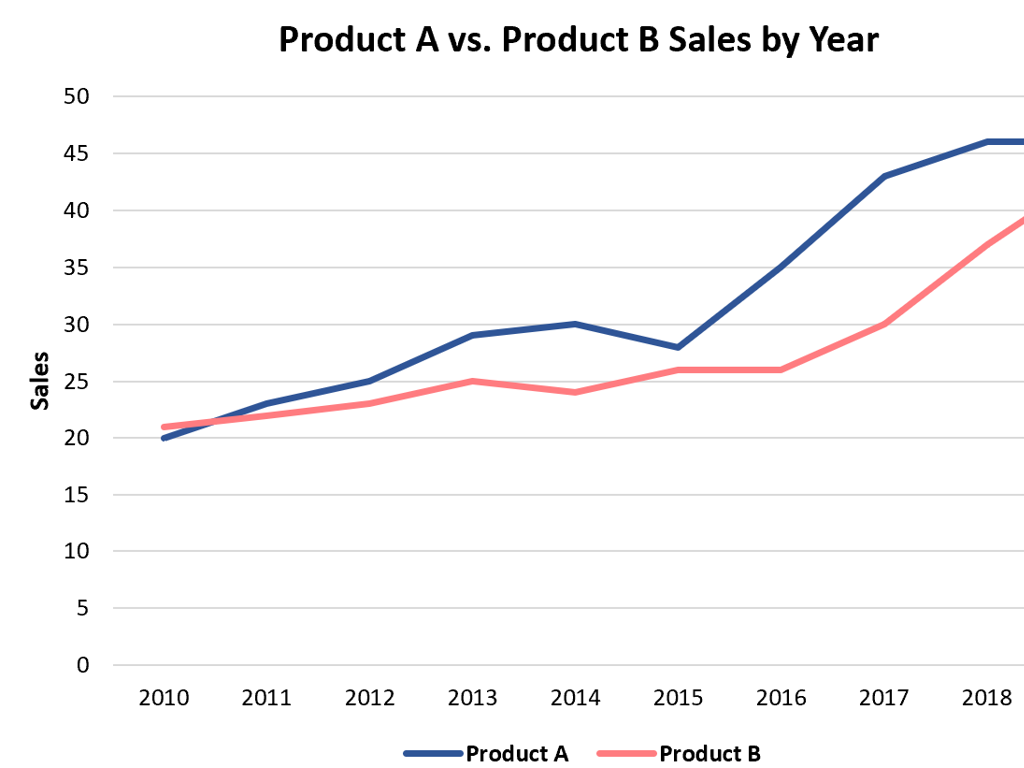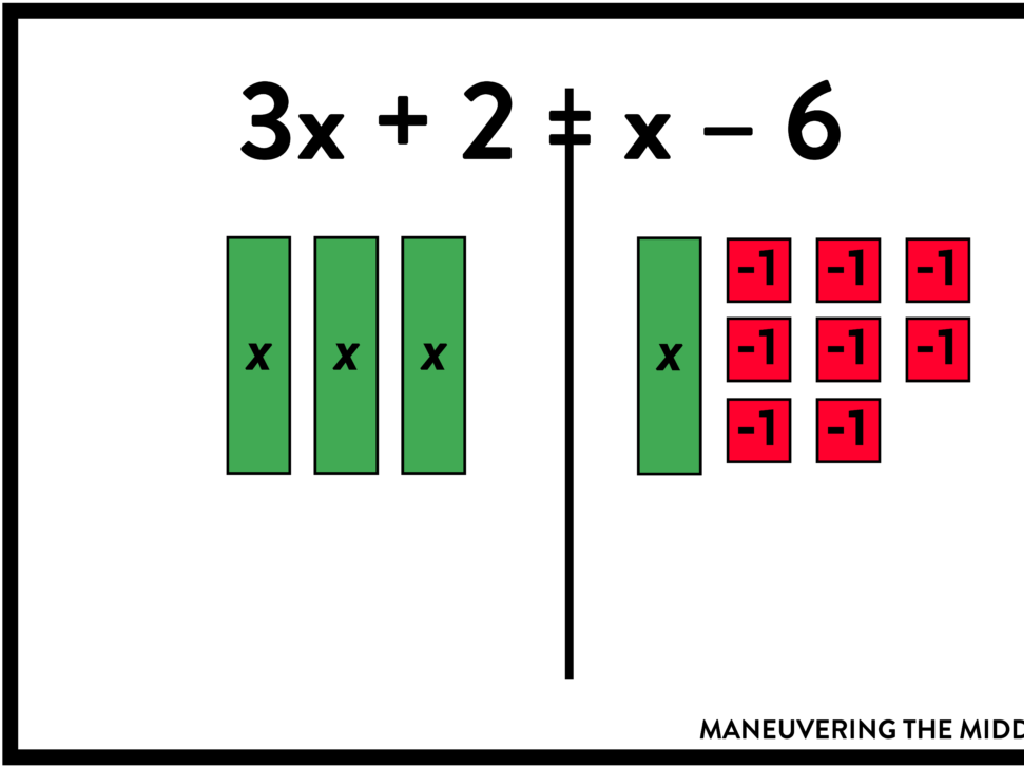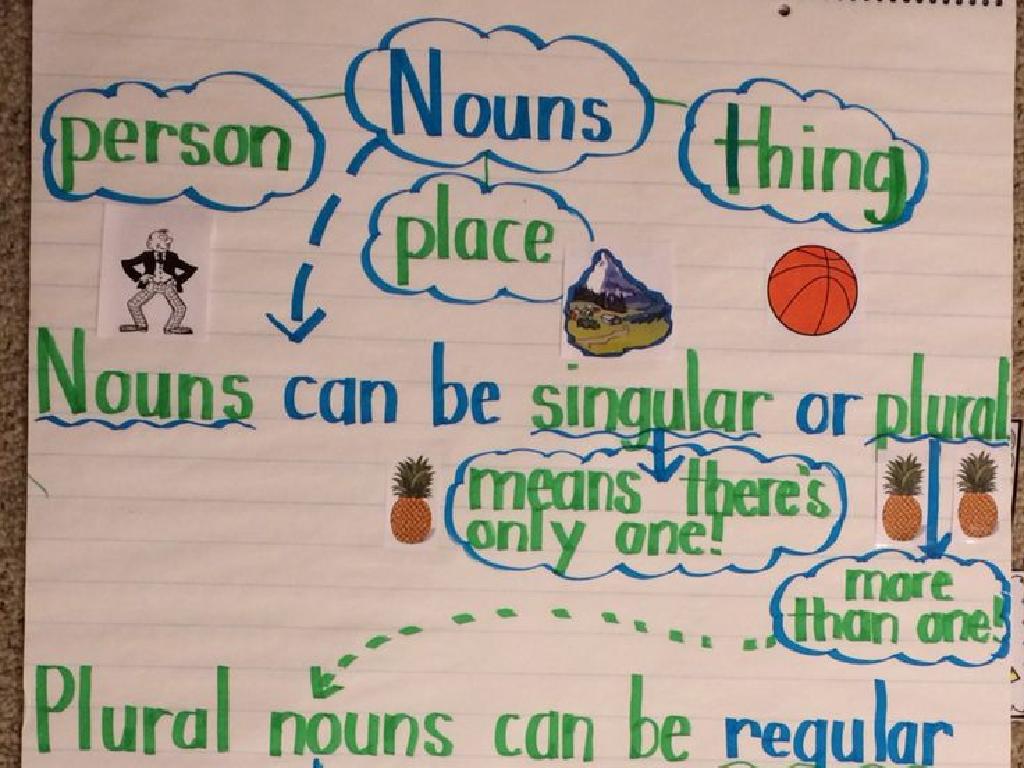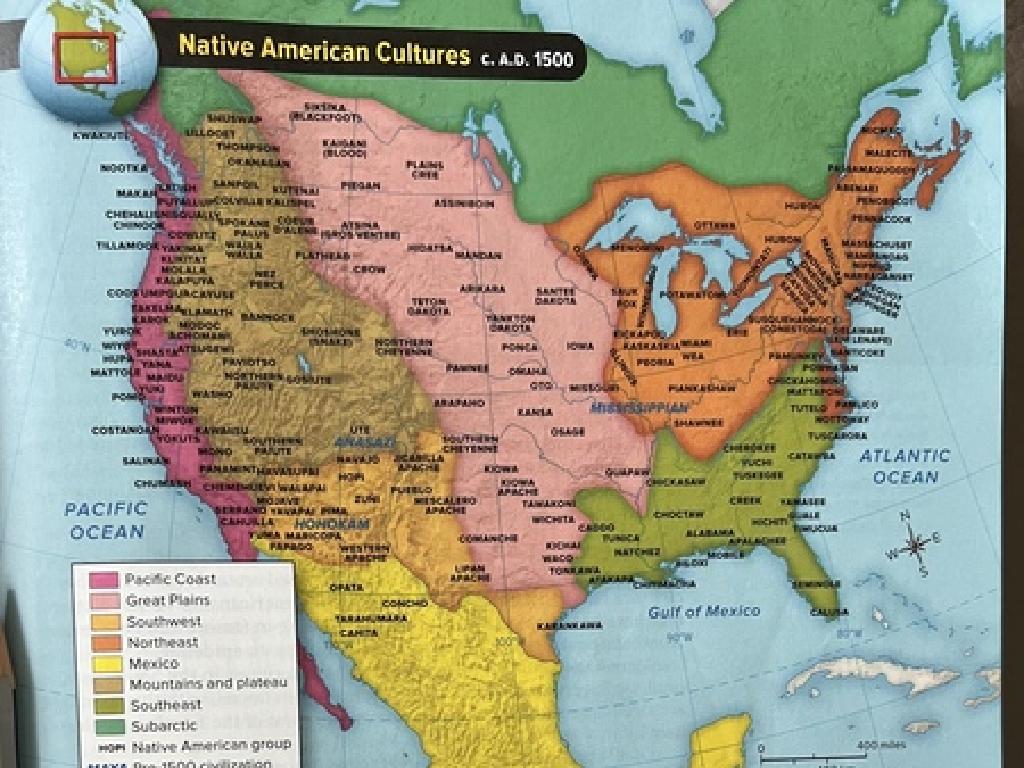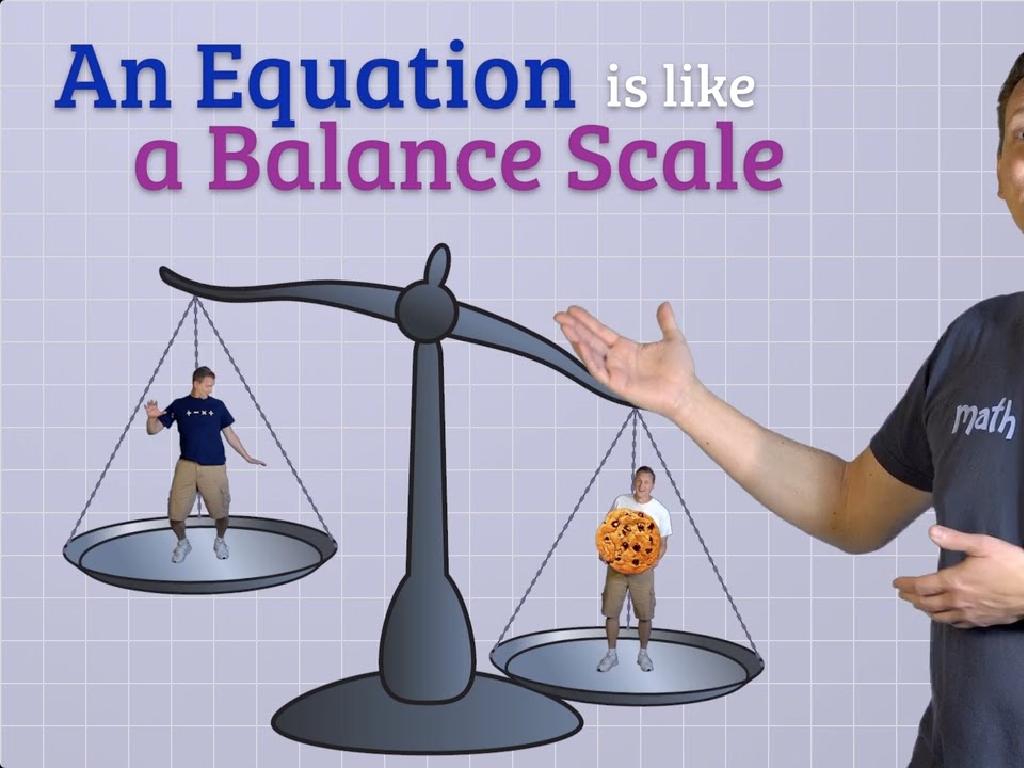Identify Arithmetic And Geometric Sequences
Subject: Math
Grade: Eighth grade
Topic: Sequences
Please LOG IN to download the presentation. Access is available to registered users only.
View More Content
Welcome to Sequences: Arithmetic & Geometric
– Understanding patterns in sequences
– Patterns are regularities that can predict the next elements.
– Defining sequences in math
– A sequence is an ordered list of numbers following a rule.
– Exploring arithmetic sequences
– Arithmetic sequences add a constant value, e.g., 2, 4, 6, 8 (+2).
– Exploring geometric sequences
– Geometric sequences multiply by a constant, e.g., 3, 9, 27, 81 (*3).
|
This slide introduces the concept of sequences in mathematics, focusing on the recognition of patterns and the definition of sequences. Emphasize the importance of understanding the underlying rules that govern the formation of a sequence. For arithmetic sequences, the rule involves adding a fixed number to each term to get the next term, known as the common difference. For geometric sequences, each term is multiplied by a fixed number to get the next term, known as the common ratio. Provide examples for each type of sequence and encourage students to think of other examples. This foundational knowledge will be crucial for their success in understanding more complex mathematical concepts.
Understanding Sequences in Math
– Define a mathematical sequence
– An ordered list of numbers following a specific pattern
– Examples of simple sequences
– Like counting numbers: 1, 2, 3, 4, or even numbers: 2, 4, 6, 8
– Sequences in everyday life
– Music rhythms, days of the week, or steps in a recipe
– Recognizing patterns in sequences
|
This slide introduces the concept of sequences in mathematics, which are essential for understanding patterns and making predictions. A sequence is an ordered list of numbers, each of which is called a term. Provide students with simple examples they can relate to, such as the sequence of natural numbers or even numbers. Highlight how sequences appear in real life, such as in the rhythm of music, the progression of days, or the steps in a cooking recipe. Encourage students to think of other examples of sequences they encounter daily. The goal is to help students recognize and understand the patterns that sequences represent, setting the foundation for identifying more complex arithmetic and geometric sequences.
Exploring Arithmetic Sequences
– Define arithmetic sequences
– A sequence with a constant difference between terms
– Identify the common difference
– The fixed number added to each term
– Form an arithmetic sequence
– Use the first term and common difference to create a sequence
– Practice with examples
– Apply the concepts to solve problems
|
This slide introduces students to the concept of arithmetic sequences, a foundational element in understanding patterns in mathematics. Start by defining an arithmetic sequence as a list of numbers where each term after the first is found by adding a constant, known as the common difference, to the previous term. Emphasize the importance of the common difference and show how it can be found by subtracting any term from the subsequent term. Demonstrate forming an arithmetic sequence by choosing a first term and repeatedly adding the common difference. Conclude with practice examples to solidify the students’ understanding, such as finding missing terms in a sequence or creating their own sequences given certain parameters. The goal is for students to become comfortable with identifying and forming arithmetic sequences in various contexts.
Identifying Arithmetic Sequences
– Criteria for arithmetic sequences
– A sequence with a constant difference between terms
– Calculating the common difference
– Subtract any term from the following term
– Examples of arithmetic sequences
– e.g., 2, 4, 6, 8 (adding 2 each time)
– Recognizing non-examples
– e.g., 1, 2, 4, 8 (not adding the same amount)
|
This slide aims to help students identify arithmetic sequences by understanding the key characteristic: a constant difference between consecutive terms. Teach students how to find this common difference by subtraction. Provide clear examples where the difference is the same and contrast with non-examples where the difference changes. Encourage students to practice with different sequences to solidify their understanding. This foundational knowledge is crucial for their progression in understanding more complex mathematical patterns.
Understanding Geometric Sequences
– Define geometric sequence
– A sequence with a constant ratio between consecutive terms, e.g., 2, 4, 8, 16…
– Identify the common ratio
– The ratio is found by dividing a term by its previous term, e.g., 4/2 = 2
– Forming a geometric sequence
– To form it, start with a number and multiply by the common ratio for each term
– Application of geometric sequences
– Used in finance, biology, physics, and other fields to model exponential growth or decay
|
This slide introduces students to geometric sequences, a fundamental concept in mathematics where each term after the first is found by multiplying the previous term by a fixed, non-zero number called the common ratio. Understanding how to identify and form geometric sequences is crucial for solving problems in various domains. Provide examples and ask students to create their own sequences using different common ratios. Highlight the importance of geometric sequences in real-world applications, such as calculating interest in finance or population growth in biology.
Identifying Geometric Sequences
– What defines a geometric sequence?
– A sequence where each term after the first is multiplied by a constant called the common ratio, e.g., 2, 6, 18, 54…
– How to find the common ratio?
– Divide any term by the previous term. For 2, 6, 18, 54, the common ratio is 6/2 = 3
– Examples of geometric sequences
– Real-life example: bacteria growth if each bacterium splits into two, the population is 1, 2, 4, 8, 16…
– Recognizing non-examples
– A sequence like 2, 4, 7, 11 is not geometric because the ratio changes
|
This slide introduces students to geometric sequences, focusing on the concept of a common ratio. Start by defining a geometric sequence and then demonstrate how to find the common ratio by dividing a term by its predecessor. Provide clear examples of geometric sequences, such as population growth in biology or compound interest in finance, to help students understand practical applications. Also, include non-examples to help students identify sequences that do not have a constant ratio. Encourage students to practice with additional sequences to solidify their understanding.
Comparing Sequences: Arithmetic vs. Geometric
– Distinct features of arithmetic sequences
– Arithmetic: constant difference between terms, e.g., 2, 4, 6, 8
– Key characteristics of geometric sequences
– Geometric: each term is multiplied by a constant, e.g., 3, 9, 27, 81
– Strategies to differentiate them
– Compare differences or ratios of terms to identify sequence type
– Engage with practice problems
– Solve problems to apply concepts and solidify understanding
|
This slide aims to help students distinguish between arithmetic and geometric sequences. Arithmetic sequences have a constant difference between consecutive terms, which can be found by subtracting any term from the term that follows it. Geometric sequences, on the other hand, have a constant ratio between consecutive terms, determined by dividing a term by the previous one. To reinforce learning, provide practice problems that require students to identify and form both types of sequences. Encourage students to explain their reasoning for each problem to deepen their comprehension.
Real-World Applications of Sequences
– Sequences observed in nature
– Fibonacci sequence in flowers, pinecones
– Architecture and sequence patterns
– Use in design: spiral staircases, arches
– Sequences in problem-solving
– Helps in predicting outcomes, organizing data
– Significance of understanding sequences
|
This slide aims to show students the practical applications of sequences in the real world. In nature, sequences like the Fibonacci sequence can be observed in the arrangement of leaves, seeds, and flowers. In architecture, sequences are used to create visually pleasing and structurally sound designs such as spiral staircases and arches. Understanding sequences is also crucial in problem-solving, as it allows us to predict future events, organize data, and develop algorithms in computer science. Highlight the importance of recognizing these patterns in everyday life and how they contribute to various fields, including mathematics, science, and art.
Class Activity: Sequence Scavenger Hunt
– Find and create sequences
– Determine sequence types
– Is it arithmetic (constant difference) or geometric (constant ratio)?
– Present sequences to class
– Reflect on the activity
– Share what you learned or found challenging.
|
This interactive class activity is designed to engage students in the practical identification of arithmetic and geometric sequences. Students will search for sequences in their environment or create their own, and then classify them as either arithmetic or geometric. Provide examples of both types of sequences to help students get started. Encourage creativity in the sequences they find or create. After identification, students will present their findings to the class, explaining how they determined the type of sequence. This will foster peer learning and discussion. Conclude with a reflection session where students can discuss what they learned and any challenges they faced. Possible activities: finding sequences in classroom objects, number patterns in nature, or creating sequences with a story.

